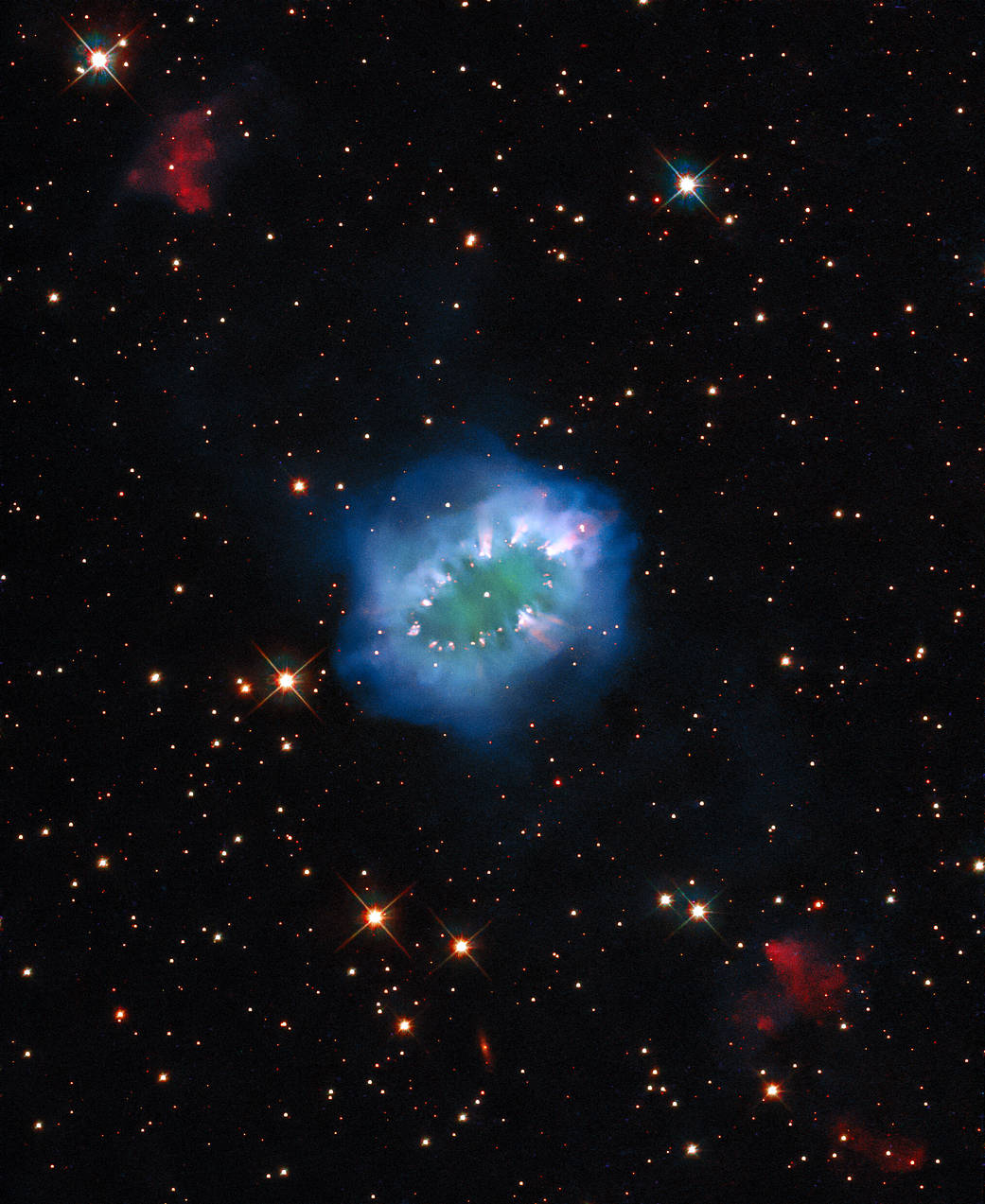The interaction of two doomed stars has created this spectacular ring adorned with bright clumps of gas – a diamond necklace of cosmic proportions. Fittingly known as the “Necklace Nebula,” this planetary nebula is located 15,000 light-years away from Earth in the small, dim constellation of Sagitta (the Arrow).
A pair of tightly orbiting Sun-like stars produced the Necklace Nebula, which also goes by the less glamorous name of PN G054.203.4. Roughly 10,000 years ago, one of the aging stars expanded and engulfed its smaller companion, creating something astronomers call a “common envelope.” The smaller star continued to orbit inside its larger companion, increasing the bloated giant’s rotation rate until large parts of it spun outwards into space. This escaping ring of debris formed the Necklace Nebula, with particularly dense clumps of gas forming the bright “diamonds” around the ring.
The pair of stars which created the Necklace Nebula remain so close together – separated by only several million miles – that they appear as a single bright dot in the center of this image. Despite their close encounter, the stars are still furiously whirling around each other, completing an orbit in just over a day.
Hubble previously released an image of the Necklace Nebula, but this new image uses advanced processing techniques to create an improved and fresh view of this intriguing object. The composite image includes several exposures from Hubble’s Wide Field Camera 3.
Text credit: European Space Agency (ESA)
Image credit: ESA/Hubble & NASA, K. Noll
两颗注定要毁灭的恒星的相互作用创造了这个壮观的环状物,上面点缀着明亮的气体团——一条宇宙大小的钻石项链。这个行星状星云被称为“项链星云”,距离地球15,000光年,位于小而昏暗的射手座(箭座)。
一对紧绕太阳运行的恒星形成了项链星云,它还有一个不那么迷人的名字PN G054.203.4。大约1万年前,其中一颗老化的恒星膨胀并吞噬了它较小的同伴,创造了天文学家所说的“公共包层”。这颗小恒星继续在那颗大恒星的内部运行,增加了这颗膨胀的巨星的自转速度,直到它的大部分向外旋转进入太空。这一逃逸的碎片环形成了项链星云,特别密集的气体团形成了环周围明亮的“钻石”。
形成项链星云的这对恒星相距如此之近——相距仅数百万英里——以至于在这幅图像的中心,它们看起来就像一个单一的亮点。尽管它们相遇的距离很近,但两颗恒星仍在猛烈地绕着彼此旋转,在一天多一点的时间内完成了一个轨道。
哈勃望远镜之前曾发布过一幅项链星云的图像,但这幅新图像使用了先进的处理技术,为这个迷人的物体创造了一个改进和新鲜的视角。这幅合成图像包含了哈勃广域相机3的几次曝光图。
文字来源:欧洲航天局(ESA)
图片来源:ESA/Hubble & NASA, K. Noll



